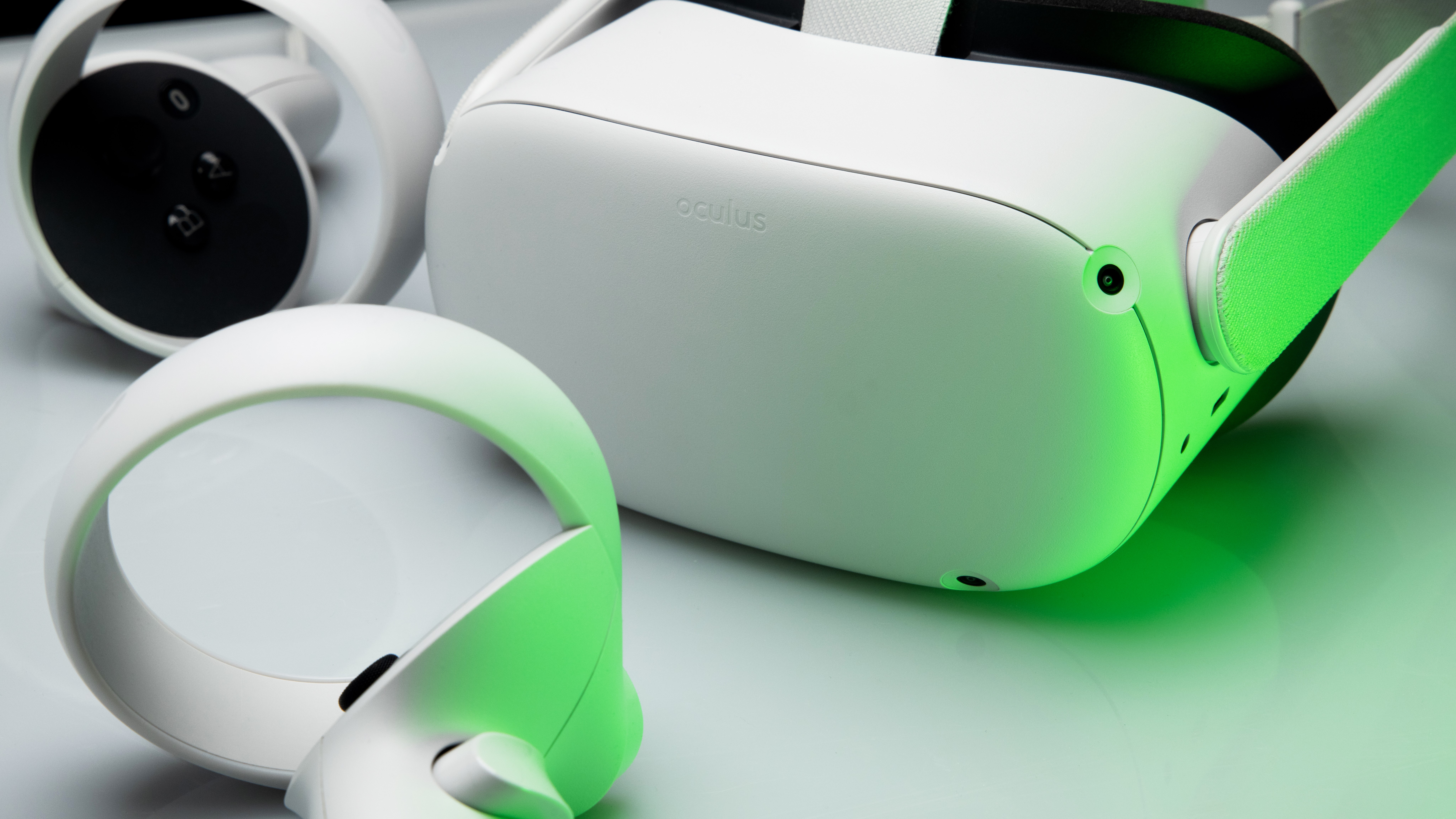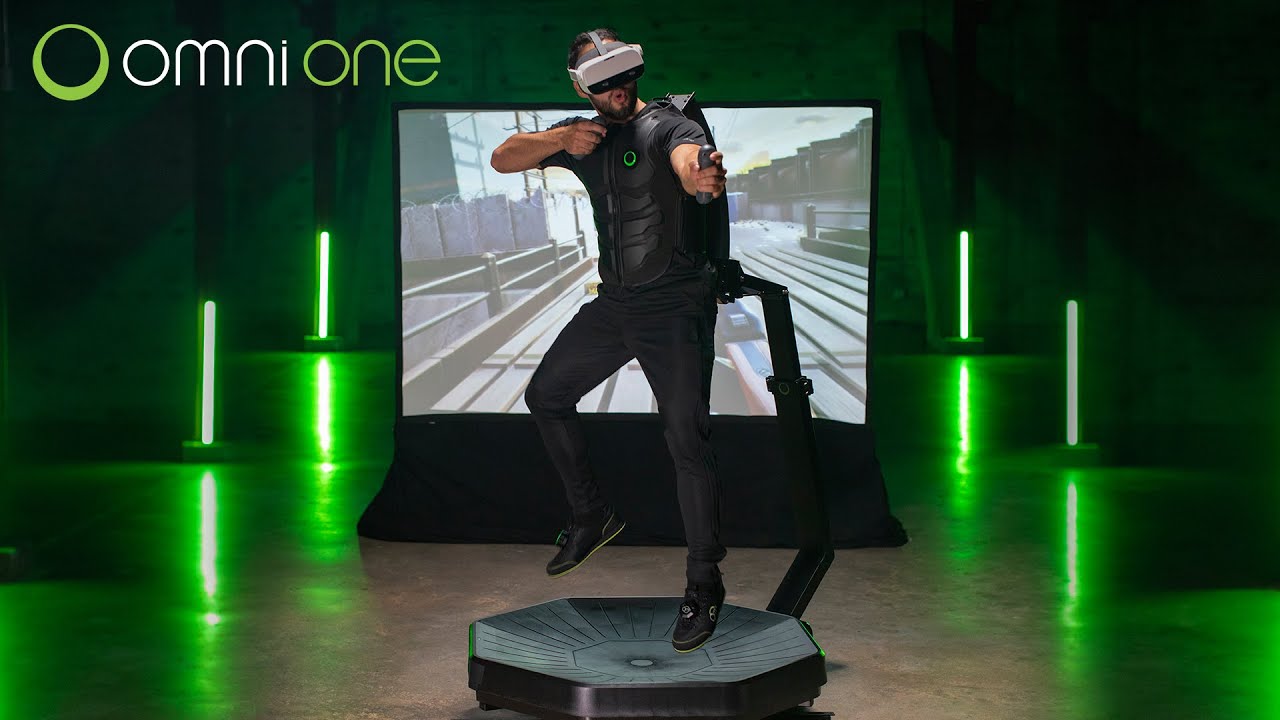HyperJump wants to cure the motion sickness caused by your Oculus Quest 2
HyperJump your way through virtual reality

Virtual reality has plenty to offer those gamers looking for a truly immersive experience. However, one issue can force many players to stop in their tracks and return to the real world: motion sickness. The researchers behind HyperJump think they might have found a solution, though.
At Siggraph 2022 – a tech conference in Canada celebrating some of the latest developments in VR – I had the opportunity to try out HyperJump for myself, and I can comfortably say I’d love for this movement system to come to my Oculus Quest 2 as soon as possible.
To boldly go...
If you want to move around a VR world, you typically have one of three methods from which to choose. The first is to literally walk around in the real space that you’re in. This method is the most immersive, it doesn't require a controller, and – provided there’s very little latency – it's the least unsettling. However, a clear downside is that you require a lot of physical space, or you'll only be able to play a game that's set in a very restricted play area.
As a result of this, most games also rely on one of the other two methods: teleportation or smooth movement. As you can probably decipher from the names, teleportation movement sees you hop around the space in a staccato manner, while smooth movement has you use the control sticks to move around fluidly – like a lot of other video games.

Teleportation is my preferred option, since even after a year with VR, smooth movement can force me to quit a game in seconds. However, smooth movement is generally more immersive, and it’s far less easy to become disoriented and lost than it is with teleportation.
HyperJump looks to blend the best of teleportation and smooth movement, creating a new form of VR motion that’s better than the sum of its parts.
...like no one has gone before
Motion sickness is typically caused by competing signals arriving from the eyes and inner ear to your brain. Let’s say you’re reading in a moving car. Your eyes will be focused on the stationery book and other fixed points around you, indicating to your brain that you’re not moving. Meanwhile, the fluid in your inner ear is being jostled around, telling your brain that you’re in motion. Your brain doesn’t know which organ to believe, with the end result that you'll start to feel nauseous.
Get daily insight, inspiration and deals in your inbox
Sign up for breaking news, reviews, opinion, top tech deals, and more.
With VR, it's the reverse of the example above that's happening; your eyes perceive that you’re moving, while your ears believe you’re standing still. The result is the same, though: the competing information makes you want to barf.
To help get around this, HyperJump forces players to tilt their bodies in the direction they want to travel. Lean forwards to go ahead; lean back to reverse; couch to sink to the ground; or go on your tiptoes to fly. If you want to change the direction in which you’re heading, you have to physically turn your body. This makes your brain think that you’re in motion, but without the need to have lots of physical space in which to move around.
HyperJump’s second trick is to automatically switch from smooth movement to teleportation when players reach speeds that induce motion sickness. This helps maintain your momentum while also keeping you from feeling ill.
Lastly, to combat the disorientation that can come with teleportation, HyperJump shows you the path you’re currently traveling along, playing a faint beat in the background that matches with your jumps, so you know when the next one is coming.
When I first stepped into the HyperJump booth, I was more than a little worried about what I was getting myself into. In the past, VR movement has made me feel super ill, and the jet lag I was suffering from having traveled to Canada from the UK the day prior wasn’t helping. However, I quickly learned my fears were unfounded; I completed each of the test’s flight paths over the virtual streets of Vancouver, and even spent some time thereafter adventuring freely without feeling sick at all.
When the tester switched me back to typical VR movement, I found myself flying around far more slowly – and within 30 seconds, I was asking to finish the test.
HyperJump’s settings are still being trialed and fine-tuned; but, hopefully, it won’t be long before it’s ready to be adopted by the best VR games. It’s easily one of the best forms of VR movement I’ve used, and while it might not work for every game, there are some – such as Lone Echo 2 – that would definitely benefit from its inclusion.

Hamish is a Senior Staff Writer for TechRadar and you’ll see his name appearing on articles across nearly every topic on the site from smart home deals to speaker reviews to graphics card news and everything in between. He uses his broad range of knowledge to help explain the latest gadgets and if they’re a must-buy or a fad fueled by hype. Though his specialty is writing about everything going on in the world of virtual reality and augmented reality.